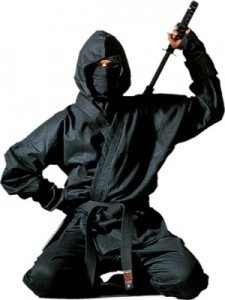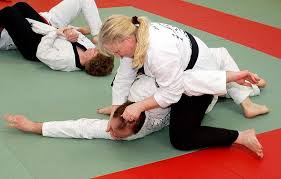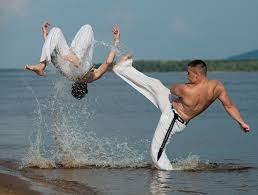Ninjutsu
 There is evidence that the secret ninja clans in Japan began their history in the 9-12th centuries, along with the formation of the samurai class. Their predecessors can be considered the hermits of the Yamabushi, who already in the 8th century lived in the mountains, professing one of the directions of Buddhism. These hermits were engaged in hard training, preached complete unity with nature, and in addition, they collected and stored various information from various sciences – chemistry, medicine, etc. Initially, secret ninjutsu societies were not connected in any way with military affairs, but after a certain time significant changes took place .
There is evidence that the secret ninja clans in Japan began their history in the 9-12th centuries, along with the formation of the samurai class. Their predecessors can be considered the hermits of the Yamabushi, who already in the 8th century lived in the mountains, professing one of the directions of Buddhism. These hermits were engaged in hard training, preached complete unity with nature, and in addition, they collected and stored various information from various sciences – chemistry, medicine, etc. Initially, secret ninjutsu societies were not connected in any way with military affairs, but after a certain time significant changes took place .
Ninjutsu itself is believed to be based on Chinese sources. But the very concept of “ninjutsu” includes only a small part of the art of ninjutsu – hiding, creating and creating an atmosphere of secrecy. The task of the ninja was to introduce enemies, carry out certain subversive works or commit murder, after which the ninja had to return after a successful operation.
Usually, ninjas hired feudal lords of various levels as mercenary spies, terrorists, murderers, and saboteurs, ready to pay a certain amount of money for the work of specialists. The ninja structure consisted of close-knit families united in clans. Only one who was born in such a family could become a ninja – after all, ninjutsu was passed only from father to his son, no strangers were accepted into the clan. Revealing secret techniques expected death from his own clan.
The greatest development of ninjutsu reached during the Sengoku Jidai period – in the 15-16 centuries. During this period of time, the largest number of wars between the feudal lords took place – and there were about 70 ninja clans. There were documented existence of two schools at that time – Iga and Koga.
Often in Japanese culture, ninjas and samurai are opposed to each other. Indeed, the philosophies inherent in both groups are directly opposite. Samurai considered the most important thing in life the ideals of the Bushido code, according to which they fought bravely and should always be ready for death. The ninjas, on the other hand, believed that the main thing was to carry out the assigned task, and since they were mainly engaged in reconnaissance, in order to fulfill the task they had to survive no matter what, to achieve victory they were ready for anything.
Ninjutsu says that it is impossible to achieve complete security. Any action destroys the existing harmony, which gives rise to resistance and action in response to the original. Moreover, the response will be the more powerful and serious, the more the original balance of the world will be upset. Therefore, the only way out is to fully understand the essence of harmony and the ability to minimize the consequences of one’s actions.
Ninjutsu schools The base of the ninjutsu of all schools are three interconnected skill groups that together create a system that can withstand virtually all dangers.
The first group of skills can be called the art of applying environmental conditions and special devices to defeat the enemy. This section included the ability to read footprints and move unnoticed by others, the ability to camouflage and pass through various obstacles, the art of equipping various ambushes, and also deceiving all kinds of feelings of the enemy. The purpose of the training was a complete merger with the outside world by subordinating the five elements, which in the Japanese version were earth, water, fire, air and void. The ninja who managed to merge with the elements was completely invisible to the enemy. This art was called Ton Jutsu, a way of disappearing through imitation.
The second group is the art of fighting an enemy, both armed and devoid of weapons. This group consists of 2 sections: the art of owning a taijutsu body and the art of wielding a bujutsu.
The third group of skills taught special mental training, allowing you to enter a special state of consciousness. Such evoked states helped to mobilize all available internal resources of the body to achieve the goal.
Ninja There was never a special system of martial arts of a ninja; in the battle they used jujutsu. However, the use of technology was different from the version of samurai. So, ninjas mainly used silent, for example – choking methods, most of the time was devoted to training in small rooms, sharp and unexpected strikes from behind, from an ambush, they trained ninjas and ways to stun the enemy.
Now in Japan there are no schools of bujutsu that would come from ninja schools. If these techniques were preserved, now they are used in special parts of the Japanese army.



